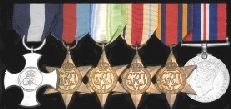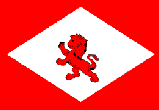D.S.C. London Gazette 26 March 1943:
For bravery during the passage of a convoy to Malta.’
Arthur Huntington Black was born in Burnley, Lancashire in June 1908, and commenced his seagoing career with the Clan Line in early 1925. Having undertaken numerous voyages in the interim, and served variously as 4th and 3rd Mate, his first wartime appointment was as 2nd Mate in the Clan Campbell. Then in July 1942 he joined the Clan Ferguson, in which capacity he shortly found himself participating in one of the most important convoys of the 1939-45 War.
“Operation Pedestal” needs no introduction here, but it is worth recalling the bare facts: of the 14 merchantmen that set out, nine were sunk, including Clan Ferguson, and three damaged, while the Senior Service lost an aircraft carrier, two cruisers and one destroyer, as well as having another half a dozen ships damaged. For the likes of Arthur Black, aboard Clan Ferguson, the moment of truth arrived on Wednesday 12 August 1942, when his ship was hit by an aerial torpedo off Zembra Island and blew up in a spectacular fashion. Peter Smith takes up the story in his history, Pedestal: the Malta Convoy of August 1942:
Arthur Huntington Black
DSC

|
Service Record
|
From
|
To
|
|
Joined Company
Cadet
|
1925
|
|
|
Clan Campbell
2nd Officer
|
1939
|
1942
|
|
Clan Ferguson
2nd Officer
|
7/1942
|
8/1942
Torpedoed & sunk
|
|
Interned
|
8/1942
|
12/1942
|
|
Samdon
Chief Officer
|
|
1945
|
|
Retired
|
1/1951
|
|
Decorated - 1943
‘A colossal explosion took place which led all who witnessed it to believe that she had blown up without survivors. The sheet of flame which followed set fire to the after part of the vessel and she began to rapidly settle by the stern. Many of the lifeboats were set on fire but most of the crew managed to get away on rafts, some using their steel helmets as paddles to get away from the blazing fuel on the sea.’
Watchers aboard the nearby Waimarama had seen firstly the Empire Hope struck by aerial missiles on their starboard beam, and then off their starboard bow the Clan Ferguson was likewise hit. Small wonder then they felt that enough was enough. An eyewitness recorded later:
‘We hauled out of line after this. I saw a terrific burst of flame, half a mile high, shoot up into the air. I cannot imagine how any of her crew escaped but soon after we heard shouts in the water. We could not risk the ship going too near the flames and were obliged to proceed. I did not see any escort standing by her so do not think that there could have been any survivors from her. We continued at full speed keeping inside territorial waters to avoid mines laid outside. For a long time the Clan Ferguson could be seen burning furiously and we saw several ships silhouetted by the light from her.’
Despite the violence of the explosion many of her crew did in fact survive. Her Second Officer, Mr A. H. Black, gives a graphic description of those moments:
‘I could see the flames coming up from the engine-room skylight and the ship's side. The hatch covers were blown off Number Four Hold and two landing craft stowed on top were also blown off. Of the ship's four lifeboats, Number Three Boat was destroyed and all the others except Number One Boat caught fire. Three rafts were got away. There was a violent explosion in Number Five Hold and the ship appeared to sink about seven minutes after being hit. The oil blazed on the water for forty-eight hours and petrol cans kept floating to the surface and catching fire, as did the oil, causing thick black smoke. In all sixty-four men got away and were eventually equally divided on the four rafts which drifted apart.’
A very gallant act was performed by Midshipman Allson, on his first voyage. Reaching a small raft, he pushed it along in front of him and helped several badly burnt men aboard. These he later transferred to a larger raft. Their blazing vessel drifted away leaving them alone save for the fading sounds of battle ... ’
Black, who was picked up in one of his ship’s rafts by the Italians and temporarily interned in Tunisia, returned to the U.K. at the end of the year and finished the War as a 1st Mate of the Samdon. Post-war he remained actively employed by the Clan Line until taking early retirement in January 1951.






